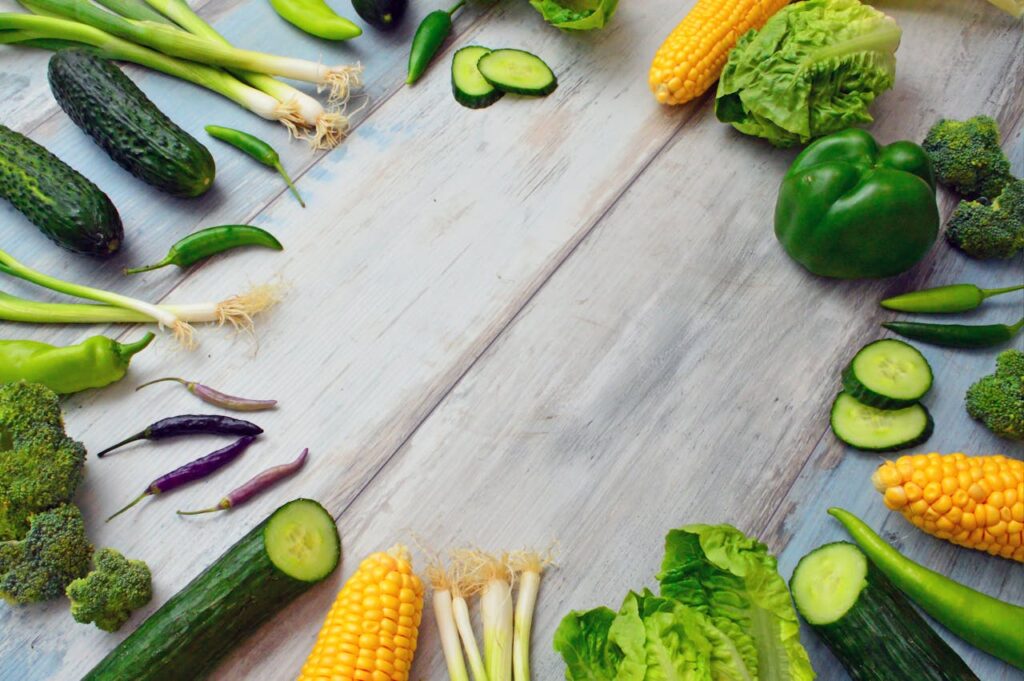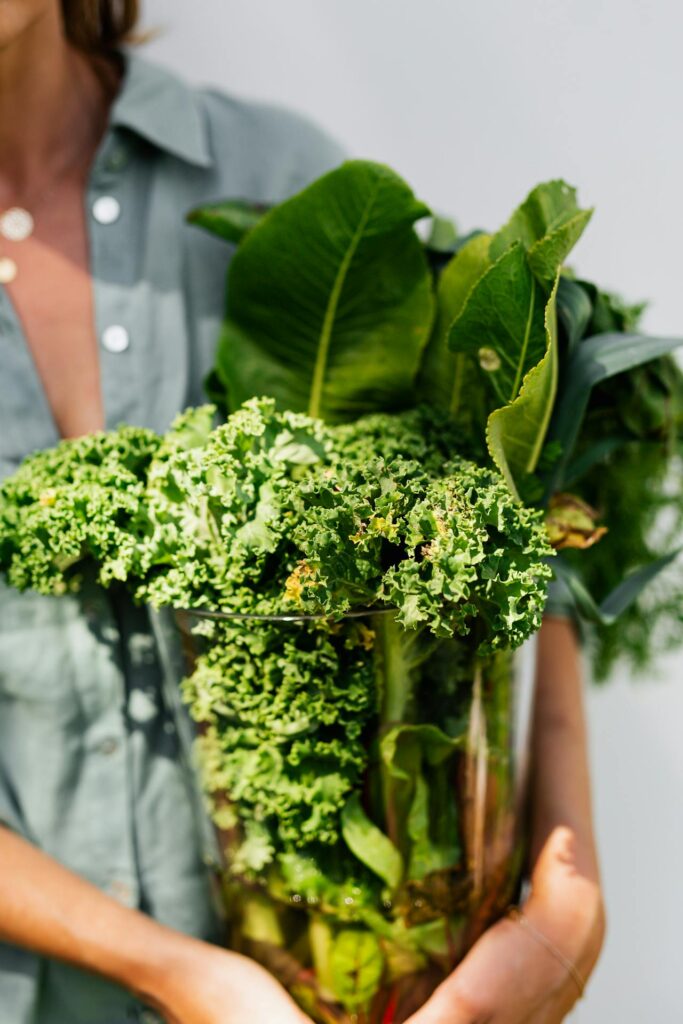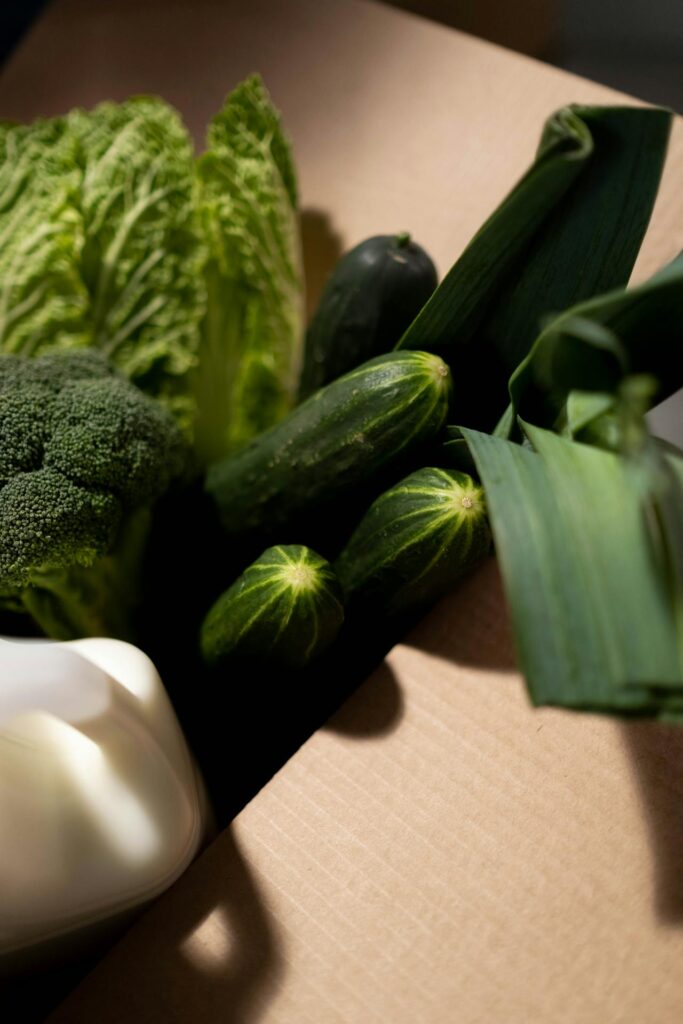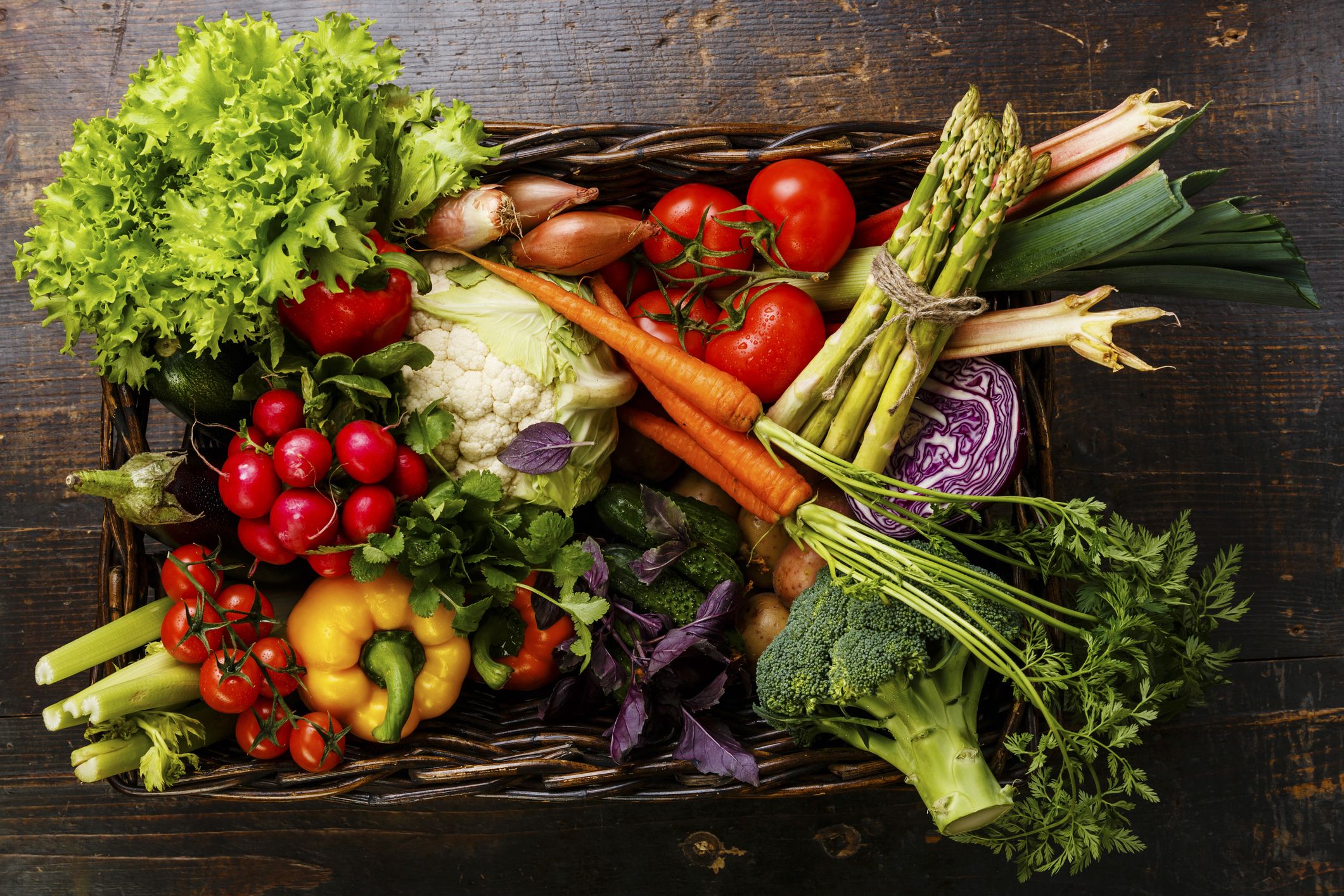Monsoon, with its refreshing rains and cooler temperatures, brings a welcome respite from the scorching summer heat. However, this season also comes with its unique set of dietary challenges and opportunities. One of the best ways to stay healthy during the monsoon is by incorporating green leafy vegetables into your diet. In this comprehensive guide, we’ll explore why green leafy vegetables are especially beneficial during the monsoon, how to choose and prepare them, and answer some frequently asked questions about green leafy vegetables in monsoon.
Table of Contents

Benefits of Green Leafy Vegetables in Monsoon
1. Nutrient-Rich Powerhouses
Green leafy vegetables like spinach, kale, and fenugreek are packed with essential nutrients. We can call them green leafy vegetables in monsoon. They are rich in vitamins A, C, and K, as well as minerals like iron, calcium, and magnesium. These nutrients are crucial for maintaining a strong immune system, especially during the monsoon when infections are more prevalent.
2. Boosting Immunity
Monsoon season often brings with it an increase in waterborne and airborne diseases. The antioxidants and vitamins found in green leafy vegetables help strengthen the immune system, making the body more resilient to infections.
3. Aiding Digestion
Monsoon can sometimes lead to digestive issues due to the increased humidity and consumption of contaminated water. Green leafy vegetables are high in dietary fiber, which aids in digestion and prevents constipation.
4. Hydration and Detoxification
These vegetables have high water content, which helps in keeping the body hydrated. Additionally, the chlorophyll present in green leaves acts as a natural detoxifier, cleansing the body of harmful toxins.

Top Green Leafy Vegetables to Eat During Monsoon
1. Spinach (Palak)
Spinach is a versatile and nutrient-dense leafy green. It can be used in soups, salads, and curries. Rich in iron and vitamins, it helps in maintaining healthy blood levels and boosting immunity. This is an example of green leafy vegetables in monsoon.
2. Fenugreek Leaves (Methi)
Fenugreek leaves are known for their slightly bitter taste and numerous health benefits. They help in controlling blood sugar levels and improving digestion, making them ideal for monsoon consumption. Good green leafy vegetables in monsoon.
3. Mustard Greens (Sarson)
Mustard greens are packed with antioxidants and have anti-inflammatory properties. They are great for promoting heart health and reducing the risk of chronic diseases. Example of green leafy vegetables in monsoon.
4. Amaranth Leaves (Chaulai)
Amaranth leaves are rich in proteins, vitamins, and minerals. They help in strengthening bones and improving eyesight, which can be beneficial during the cloudy monsoon days.
5. Lettuce
Lettuce is perfect for fresh salads and sandwiches. Its high water content helps in keeping the body hydrated, and it is also low in calories, making it great for weight management.
How to Safely Consume Green Leafy Vegetables in Monsoon
1. Proper Washing
During the monsoon, the risk of contamination increases. It is essential to wash green leafy vegetables thoroughly under running water. Soaking them in salt water or vinegar solution for a few minutes can help remove any remaining impurities.
2. Cooking Over Raw
While raw salads are healthy, cooking green leafy vegetables can reduce the risk of infections. Steaming, sautéing, or boiling them ensures that any harmful bacteria are killed.
3. Storage Tips
Store leafy greens in a cool, dry place. Use them within a few days of purchase to ensure freshness. Avoid storing them in plastic bags as they can trap moisture and cause the vegetables to spoil faster.
Delicious Monsoon Recipes with Green Leafy Vegetables in Monsoon
1. Spinach Soup
Ingredients:
- 2 cups spinach leaves
- 1 onion, chopped
- 2 cloves garlic, minced
- 1 cup vegetable broth
- Salt and pepper to taste
Instructions:
- Sauté onions and garlic in a pan until translucent.
- Add spinach leaves and cook until wilted.
- Pour in the vegetable broth and let it simmer for 10 minutes.
- Blend the mixture until smooth and season with salt and pepper.
- Serve hot with a dash of cream.
2. Methi Paratha
Ingredients:
- 1 cup fenugreek leaves, chopped
- 2 cups whole wheat flour
- 1 tsp carom seeds
- Salt to taste
- Water as needed
Instructions:
- Mix all the ingredients in a bowl and knead into a dough.
- Divide the dough into small balls and roll them out into flat discs.
- Cook on a hot griddle until golden brown on both sides.
- Serve with yogurt or pickle.
3. Mustard Greens Curry
Ingredients:
- 2 cups mustard greens, chopped
- 1 onion, chopped
- 2 tomatoes, chopped
- 1 tsp ginger-garlic paste
- 1 tsp cumin seeds
- 2 tbsp oil
- Salt and spices to taste
Instructions:
- Heat oil in a pan and add cumin seeds.
- Sauté onions and ginger-garlic paste until fragrant.
- Add tomatoes and cook until soft.
- Add mustard greens and cook until tender.
- Season with salt and spices and serve hot with rice or roti.

Table: Nutritional Value of Popular Green Leafy Vegetables in Monsoon
| Vegetable | Calories (per 100g) | Protein (g) | Vitamin A (% DV) | Vitamin C (% DV) | Iron (% DV) |
| Spinach | 23 | 2.9 | 56 | 47 | 15 |
| Fenugreek Leaves | 49 | 4.0 | 43 | 32 | 20 |
| Mustard Greens | 27 | 2.9 | 118 | 65 | 9 |
| Amaranth Leaves | 23 | 2.1 | 97 | 70 | 7 |
| Lettuce | 15 | 1.4 | 15 | 5 | 2 |
People Also Search: Winter Green Leafy Vegetables
Frequently Asked Questions (FAQs)
1. Why are green leafy vegetables in monsoon important?
Green leafy vegetables are packed with essential nutrients that boost immunity, aid digestion, and provide hydration. They are particularly beneficial during the monsoon when the risk of infections is higher.
2. How can I ensure the vegetables are safe to eat during the monsoon?
Thoroughly wash the vegetables under running water and soak them in a salt or vinegar solution. Cooking them instead of eating them raw can also help reduce the risk of infections.
3. Can I store green leafy vegetables for a long time?
It’s best to consume green leafy vegetables within a few days of purchase. Store them in a cool, dry place and avoid using plastic bags to prevent moisture buildup.
4. What are some easy recipes with green leafy vegetables in monsoon?
Some easy and delicious recipes include spinach soup, methi paratha, and mustard greens curry. These dishes are nutritious and perfect for the monsoon season.
5. Are there any side effects of consuming too many green leafy vegetables?
While green leafy vegetables are generally safe and healthy, consuming them in excessive amounts can sometimes lead to digestive issues like bloating or gas. Moderation is key.
6. Can green leafy vegetables help in weight loss?
Yes, green leafy vegetables are low in calories and high in fiber, making them an excellent choice for weight loss. They help you feel full longer, reducing overall calorie intake.
7. Are there any green leafy vegetables to avoid during the monsoon?
It’s best to avoid leafy greens that appear wilted or have visible signs of contamination. Always choose fresh and vibrant greens. If you have a sensitive stomach, be cautious with greens like kale, which can be harder to digest for some people.
8. How can I preserve green leafy vegetables in monsoon for longer use?
Blanching and freezing green leafy vegetables can help preserve them for longer. Blanch the greens in boiling water for a few minutes, then cool them quickly in ice water, drain, and store in airtight containers or freezer bags.
9. Are green leafy vegetables safe for everyone?
Green leafy vegetables are generally safe for most people. However, individuals on blood-thinning medications should consult their doctor before consuming large amounts of greens high in vitamin K, such as spinach and kale, as it can interfere with medication.
10. What are some ways to encourage children to eat green leafy vegetables?
Incorporate greens into dishes that children already enjoy, such as adding spinach to pasta sauces or blending greens into smoothies. You can also make fun shapes or colorful salads to make them more appealing.
Exploring Lesser-Known Green Leafy Vegetables for Monsoon
While popular greens like spinach and fenugreek are well-known, there are several lesser-known green leafy vegetables that are equally nutritious and beneficial, especially during the monsoon season. Here are a few worth exploring:
1. Purslane (Kulfa)
Purslane is a leafy vegetable rich in omega-3 fatty acids, antioxidants, and vitamins. It has a slightly sour and salty taste, making it a unique addition to salads and soups. Its high nutrient content helps in reducing inflammation and boosting heart health.
2. Malabar Spinach (Basella)
Malabar spinach is a tropical green leafy vegetable that thrives in the monsoon. It is rich in vitamins A and C, iron, and calcium. Its mucilaginous texture makes it ideal for thickening soups and stews, providing a nutritious twist to traditional recipes. Good green leafy vegetables in monsoon.
3. Water Spinach (Kangkong)
Water spinach, also known as kangkong, is a semi-aquatic plant popular in Asian cuisine. It is high in vitamins A and C, iron, and fiber. This vegetable is excellent for promoting digestion and improving vision.
4. Drumstick Leaves (Moringa)
Drumstick leaves are highly nutritious, containing vitamins A, C, and E, along with calcium and protein. They have anti-inflammatory properties and are known to boost energy levels and improve overall health. Good green leafy vegetables in monsoon.
5. Sorrel Leaves (Gongura)
Sorrel leaves have a tangy flavor and are rich in antioxidants, vitamins, and minerals. They are great for improving digestion and boosting the immune system. Sorrel leaves are commonly used in soups, stews, and chutneys.
Tips for Incorporating Green Leafy Vegetables into Your Diet
1. Start Your Day with a Green Smoothie
Blend spinach, kale, or any leafy green with fruits like bananas, apples, or berries, and add a splash of almond milk or yogurt. This refreshing smoothie is a great way to kickstart your day with a burst of nutrients. Good green leafy vegetables in monsoon.
2. Add Greens to Your Breakfast
Incorporate leafy greens into your breakfast by adding them to omelets, scrambled eggs, or savory pancakes. You can also make a nutritious breakfast bowl with sautéed greens, quinoa, and a poached egg.
3. Enhance Your Salads
Mix different types of green leafy vegetables to create a colorful and nutrient-dense salad. Add toppings like nuts, seeds, and lean proteins to make it a complete meal. Dress with olive oil, lemon juice, and herbs for added flavor.
4. Make Green Leafy Wraps
Use large green leaves like lettuce or Swiss chard as wraps instead of tortillas. Fill them with your favorite vegetables, lean meats, or legumes for a healthy and low-carb meal option. Good green leafy vegetables in monsoon.
5. Sneak Greens into Your Dishes
Add finely chopped greens to soups, stews, casseroles, and pasta sauces. This is an easy way to increase your intake of green leafy vegetables without altering the taste of your favorite dishes.
Additional Recipes with Green Leafy Vegetables in Monsoon
4. Purslane and Tomato Salad
Ingredients:
- 2 cups purslane leaves
- 1 cup cherry tomatoes, halved
- 1 cucumber, sliced
- 1 red onion, thinly sliced
- 2 tbsp olive oil
- 1 tbsp lemon juice
- Salt and pepper to taste
Instructions:
- In a large bowl, combine purslane leaves, cherry tomatoes, cucumber, and red onion.
- Drizzle with olive oil and lemon juice.
- Season with salt and pepper and toss well.
- Serve immediately as a refreshing side dish.
5. Malabar Spinach Stir-Fry
Ingredients:
- 2 cups Malabar spinach, chopped
- 1 onion, chopped
- 2 cloves garlic, minced
- 1 red chili, sliced
- 1 tbsp soy sauce
- 2 tbsp oil
- Salt to taste
Instructions:
- Heat oil in a pan and sauté onions and garlic until fragrant.
- Add red chili and Malabar spinach.
- Stir-fry for a few minutes until the spinach is wilted.
- Add soy sauce and salt, mix well.
- Serve hot with steamed rice.
6. Water Spinach Soup
Ingredients:
- 2 cups water spinach, chopped
- 1 carrot, sliced
- 1 onion, chopped
- 2 cloves garlic, minced
- 4 cups vegetable broth
- Salt and pepper to taste
Instructions:
- In a pot, sauté onions and garlic until translucent.
- Add carrots and cook for a few minutes.
- Pour in the vegetable broth and bring to a boil.
- Add water spinach and let it simmer for 10 minutes.
- Season with salt and pepper and serve hot.
7. Drumstick Leaf Curry
Ingredients:
- 2 cups drumstick leaves
- 1 onion, chopped
- 2 tomatoes, chopped
- 1 tsp ginger-garlic paste
- 1 tsp turmeric powder
- 1 tsp cumin seeds
- 2 tbsp oil
- Salt to taste
Instructions:
- Heat oil in a pan and add cumin seeds.
- Sauté onions and ginger-garlic paste until fragrant.
- Add tomatoes and cook until soft.
- Add drumstick leaves, turmeric powder, and salt.
- Cook until the leaves are tender.
- Serve hot with rice or roti.
8. Sorrel Leaf Chutney
Ingredients:
- 2 cups sorrel leaves
- 1 onion, chopped
- 2 green chilies, chopped
- 1 tbsp oil
- Salt to taste
Instructions:
- Heat oil in a pan and sauté onions and green chilies until soft.
- Add sorrel leaves and cook until wilted.
- Blend the mixture into a smooth paste.
- Season with salt and serve with rice or as a side dish.
Conclusion
Green leafy vegetables in monsoon are a nutritional powerhouse, especially during the monsoon season. Incorporating them into your diet can help boost immunity, aid digestion, and keep you hydrated. With proper washing and cooking methods, you can enjoy the myriad benefits these vegetables offer while staying safe and healthy. So, embrace the monsoon with a plate full of green goodness and relish the season to the fullest!
By incorporating green leafy vegetables into your monsoon diet, you can enjoy their numerous health benefits while savoring delicious and nutritious meals. Remember to always wash and cook them properly to ensure safety and maximize their positive effects on your health. Happy monsoon eating!

Leave a Reply